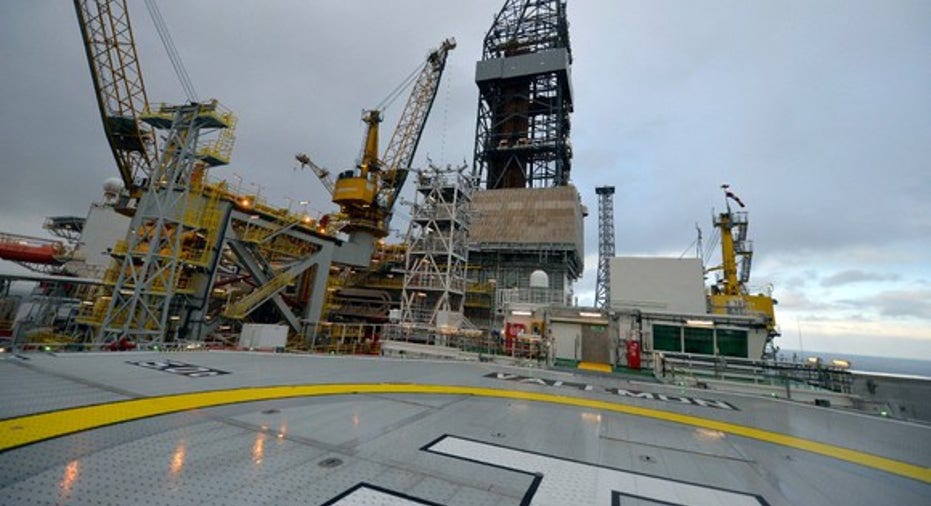Why Statoil's Fourth-Quarter Earnings Took a Hard Dive

This past quarter was supposed to be the one where investors got to see the effects from Statoil's (NYSE: STO) cost-cutting efforts over the past couple of years. But despite signs in the company's latest earnings report that those efforts were working, its earnings results sure didn't show it.
Let's take a look at Statoil's most recent results to see why management's efforts to rein in costs didn't have as much of an effect and why we may start to see some in 2017.
Image source: Harald Pettersen/Statoil.
Statoil's results: The raw numbers
| Results* | Q4 2016 | Q3 2016 | Q4 2015 |
|---|---|---|---|
| Revenue | $12,756 | $12,106 | $13,093 |
| Net income | ($2,785) | ($427) | ($1,122) |
| Earnings per share | ($0.87) | ($0.14) |
($0.35) |
| Cash flow from operations | $2,027 | $3,658 | $2,218 |
Data source: Statoil earnings release.*In millions, except per-share data.
As with so many other large oil and gas companies recently, the headline numbers don't necessarily tell the whole story. There are a lot of one-time charges and expenses in these numbers. According to management, the company took about $2.3 billion in asset impairments across all of its business segments in the fourth quarter. Now that oil prices have seemingly halted their decline and are on the upswing again, we can reasonably assume that many of those impairment charges we've seen lately will start to fall.
It's also worth noting that the company's cash flow figures are a little deceiving as well. In the quarter, Statoil had a $1.7 billion increase in working capital compared to a $875 million drawdown in the third quarter. For investors in large oil and gas companies, it's important to remember that results can vary considerably from quarter to quarter because of items like this.
Data source: Statoil earnings release. Author's chart.
What happened with Statoil this quarter?
- Total production for the fourth quarter was 2.095 million barrels of oil equivalent per day, which was a slight uptick from the prior quarter and this time last year. New field ramp-up combined with low levels of turnaround activity in the quarter were mostly responsible for the gains this past quarter.
- Cost-cutting efforts for the year, according to management, totaled $3.2 billion. That's considerably better than the $2.5 billion management projected just the prior quarter. Statoil believes it can reduce costs by another $1 billion in 2017.
- Capital spending for 2016 came in below original estimates of $11 billion-$12 billion to $10.1 billion. This doesn't include the $1.89 billion in exploration expenses, which are not included in capital expenses.
- Statoil sold its interest in the Kai Kos Dehseh oil sands projects in Canada for a total of $832 million Canadian. Part of that value is a 20% equity interest in the buyer, Athabasca Oil Corporation.
- The company won two offshore blocks in Mexico's first deeepwater auction. Statoil will be the operator of the two blocks in partnership with BP and Total.
- Statoil also won an auction bid to develop an offshore wind far off Long Island, New York.
- Total debt at the end of the quarter stood at $27.9 billion, a $2 billion reduction from this time last year.
What management had to say
As part of his capital markets update, CEO Eldar Saetre's large focus was on Statoil's significant cost-cutting measures:
Much of the cost savings will show up in its new assets slated to come on line. Between now and 2022, the company expects its cash cost breakeven across its entire portfolio to be $27 per barrel.
Looking ahead
As part of the fourth-quarter results, management also released its outlook for 2017. It expects to shell out about $11 billion on capital spending as well as another $1.5 billion on exploratory wells. Also, total production growth is expected to be 4%-5% higher from 2016 levels.
Longer term, the company is targeting a return on capital invested in excess of 10% in 2020, with the assumption of Brent oil prices being at $70 per barrel. It should probably be noted that this is the highest per-barrel price assumption among the integrated oil and gas companies that have released earnings so far.
10 stocks we like better than StatoilWhen investing geniuses David and Tom Gardner have a stock tip, it can pay to listen. After all, the newsletter they have run for over a decade, Motley Fool Stock Advisor, has tripled the market.*
David and Tom just revealed what they believe are the 10 best stocks for investors to buy right now... and Statoil wasn't one of them! That's right -- they think these 10 stocks are even better buys.
Click here to learn about these picks!
*Stock Advisor returns as of February 6, 2017
Tyler Crowe owns shares of Total. The Motley Fool recommends Statoil and Total. The Motley Fool has a disclosure policy.